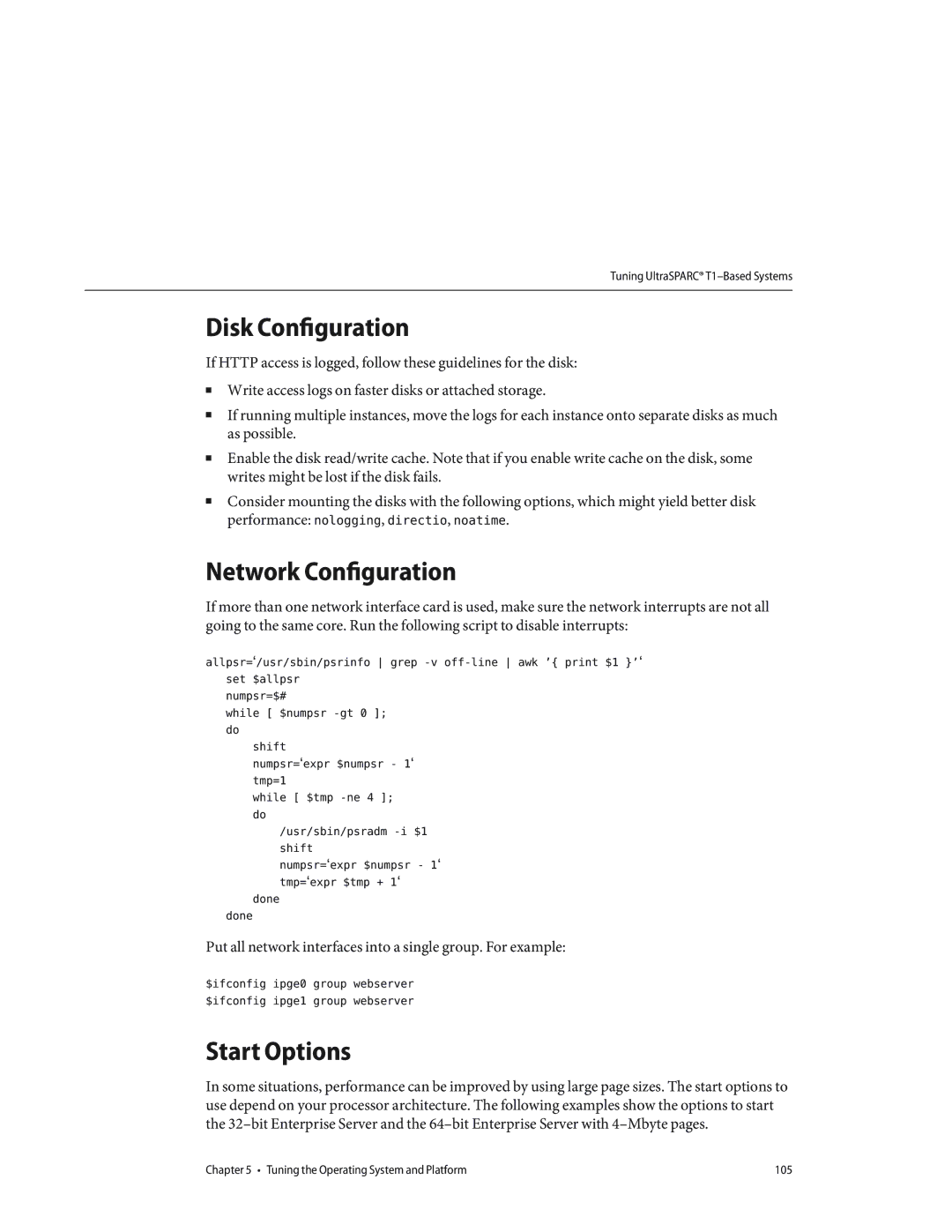Tuning UltraSPARC®
Disk Configuration
If HTTP access is logged, follow these guidelines for the disk:
■Write access logs on faster disks or attached storage.
■If running multiple instances, move the logs for each instance onto separate disks as much as possible.
■Enable the disk read/write cache. Note that if you enable write cache on the disk, some writes might be lost if the disk fails.
■Consider mounting the disks with the following options, which might yield better disk performance: nologging, directio, noatime.
Network Configuration
If more than one network interface card is used, make sure the network interrupts are not all going to the same core. Run the following script to disable interrupts:
allpsr=‘/usr/sbin/psrinfo grep
numpsr=$#
while [ $numpsr
shift
numpsr=‘expr $numpsr - 1‘ tmp=1
while [ $tmp
/usr/sbin/psradm
numpsr=‘expr $numpsr - 1‘ tmp=‘expr $tmp + 1‘
done done
Put all network interfaces into a single group. For example:
$ifconfig ipge0 group webserver
$ifconfig ipge1 group webserver
Start Options
In some situations, performance can be improved by using large page sizes. The start options to use depend on your processor architecture. The following examples show the options to start the
Chapter 5 • Tuning the Operating System and Platform | 105 |
